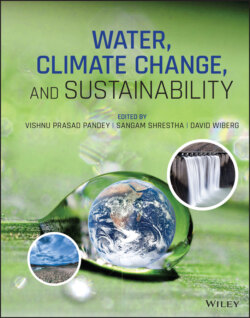Читать книгу Water, Climate Change, and Sustainability - Группа авторов - Страница 45
3.3.2. Energy Analysis
ОглавлениеEnergy analysis of bio‐based systems refers to the quantification of the balance between energy supply and energy use in three phases of energy cycle, as described in section 3.3.1. Energy analysis in agricultural production has become important because of the increase in the amount of inputs. For example, an increase in nitrogen fertilizer used in corn production has driven an increase in corn yield (Kraatz et al., 2009), but it has given rise to other issues such as eutrophication in nearby water bodies, increasing dependency of soil fertility on fertilizers, and negative impacts on human health. Similarly, energy analysis in a bio‐based industry can help quantify energy use in each processing step, so that the processes can be optimized to improve the energy efficiency. In energy analysis of bio‐based systems, all materials involved in the processing path are back‐tracked to their initial fossil energy input.
Energy inputs and outputs in agricultural fields, fuel, equipment, and consumables are quantified based on a functional unit within the defined system boundary. The functional unit for energy analysis in bio‐based systems can be expressed in terms of mass (e.g. J/ton), area (e.g. J/hectare), or economic value of the products (e.g. J/$1000) (Mousavi‐avval et al., 2018). This allows quantification of the energy used for production, harvest and post‐harvest logistics.
Direct energy use during the agricultural crop production phase includes energy content of diesel fuel used in agricultural operations, from field preparation to harvest, as well as electrical energy used in irrigation systems. Energy used in background processes is accounted for as indirect energy. Indirect energy associated with physical inputs, e.g. fertilizers, pesticides, seeds, machineries, is defined as the sum of energy consumed during the production of the input and the energy used for transportation of the input from the plant to the end user or local market. For example, indirect energy associated with agricultural machineries is estimated based on energy used during the manufacture of machineries in the factory as well as energy use for transportation of agricultural machinery from the factory to the local market. To estimate indirect energy associated with the depreciation of an agricultural machinery during specific field operation, it is assumed that total energy consumption during the manufacturing and transportation of the machine is depreciated during its economic lifetime. Lack of data availability makes the energy use estimation in the background processes more complicated. However, there are databases, e.g. Greenhouse, Regulated Emissions, and Energy Use in Transportation (GREET) model and Ecoinvent database, that provide an estimation of energy use for these background processes.
In the industrial phase, liquid fuel (mainly diesel) is used for long‐distance transportation, heating, drying, and other purposes. Direct energy of fuels and electricity is quantified based on their energy content. In addition, embodied energy of the equipment and chemicals used for processing and conversion is quantified based on depreciation of energy use for the manufacture of equipment during the economic lifetime.
